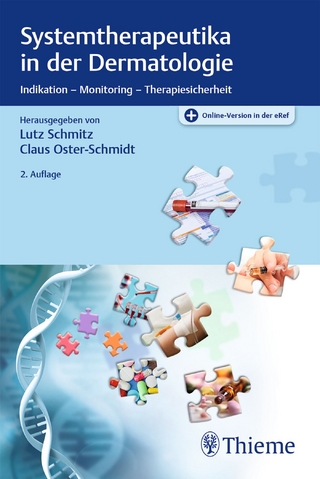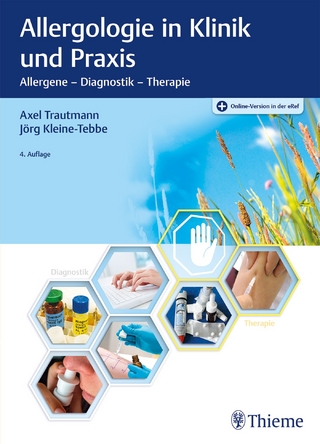
Vitiligo
Springer International Publishing (Verlag)
978-3-319-62958-2 (ISBN)
Since the first edition of this book was published, new knowledge has been gained on Vitiligo. This widely revised and updated second edition, written by worldwide experts in the field, fully reflects this progress. The apparently, simple and poorly symptomatic presentation of the disease has been a strong disadvantage to its study, as compared to other common chronic skin disorders such as psoriasis and atopic dermatitis. A good skin-based angle of attack is also lacking because generalized Vitiligo is clearly epitomizing the view of skin diseases as simple targets of a systemic unknown dysregulation (diathesis). This view has mostly restricted Vitiligo to the manifestation of an auto-immune diathesis and skin events, which are easily detected using skin biopsies in most other situations, have not been precisely recorded, with the argument that a clinical diagnosis was sufficient for the management of the patient with Vitiligo. This richly illustrated second edition reflectsthe constant international effort to share the information gathered about this disorder at the clinical, pathophysiological and therapeutic levels. Its aim still being to bridge current knowledge at the clinical and investigative level, to point to the many unsolved issues, and to delineate future priorities for research.
Professor Mauro Picardo graduated in Rome at "La Sapienza" University, his main topics of interest are skin biochemistry, free radical mediated damage of the skin, mechanism of control of skin pigmentation, and pigmentary disorders. As Director of the Integrated Center of Metabolomic Research (CIRM) at the San Gallicano Institute, he coordinates lipidomic studies on acne and related disorders (seborrheic dermatitis, rosacea) in sebum and blood samples. The team is specialised in vitiligo and in particular in the study of the biological and molecular mechanisms involved in pigmentation with the aim of finding new preventative and therapeutic treatments. Dr Picardo has served in the Board of national and International scientific societies as well as being President of the ESPCR. He chairs the Vitiligo European Task Force and the Pigmentary disorders group of the EADV in collaboration with Dr. Alain Taieb. Professor Picardo has organized several national and international conferences (such as the Vitiligo International Symposium held in Rome in Dec 2016) and is member of the Editorial Board of many dermatological and biochemical journals including Pigment Cell and Melanoma Research and Experimental Dermatology. He is author of more than 300 publications in peer-reviewed journals and more than 30 chapters in different books, most of which are dedicated to pigmentation, focusing on both the biological and clinical approaches.
Preface.- I Defining the Disease.- 1.1 historical aspects.- 1.2 definitions and classification.- 1.3 Epidemiology.- 1.4 Histopathology including electron microscopy.- 1.5 Clinical aspects Including natural history according to subsets.- Short introduction.- 1.5.1 vitiligo including acrofacial, universalis.- 1.5.2 segmental vitiligo Including clinical aspects.- 1.5.3 Mixed vitiligo.- 1.5.4 rare variants including inflammatory.- 1.5.5 subtypes of mucocutaneous pigment cell involvement: mucosal, hair follicle (leukotrichia), nevus cells (halo nevus).- 1.5.6 extracutaneous melanocytes.- 1.5.7 Environmental triggers: Koebner phenomenon and occupational vitiligo.- 1.5.8 associated disorders and comorbidities includingautoimmune/inflammatory disorders, immunodeficiences, rare monogenic diseases.- 1.5.9 age and vitiligo: childhood, pregnancy, late-onset.- 1.5.10 vitiligo and skin of colour.- 1.6 assessment and scoring including QoL.- 1.7 Editor's synthesis.- II Understanding the Disease.- 2.1 pathophysiology overview.- Unifying concepts V-SV.- 2.2 methods to study vitiligo.- 2.2.1 in vivo confocal microscopy and other noninvasive techniques.- 2.2.2 animal models.- 2.2.3 in vitro.- 2.3 critical assessment of published data on vitiligo Short introduction.- 2.3.1 Genetics.- 2.3.2 epigenetics.- 2.3.3 melanocyte stability.- 2.3.4 oxidative stress and intrinsic melanocyte defects.- 2.3.5 immunity (innate, adaptive). Innate and adaptive separated.- 2.3.6 peptides, growth factors including POMC and family.- 2.3.7 Stem cells.- 2.3.8 other defects and mechanisms.- 2.4 pathophysiology of segmental vitiligo.- 2.5 Editor's synthesis.- III Treating the Disease.- 3.1 management overview.- What has changed in a therapeutic perspective.- 3.2 discussion of available and new therapies.- 3.2.1 medical therapies.- 3.2.2 phototherapies.- 3.2.3 surgical therapies.- 3.2.4 depigmenting therapies.- 3.3combined/sequential/integrated therapies including maintenance therapy.- 3.4 camouflage.- 3.5 photoprotection.- 3.6 age, gender, ethnic skin, specific locations.- 3.7 psychological intervention.- 3.8 patient's perspectives.- 3.9 discussion of empirical, traditional, alternative approaches.- 3.10 evidence-based medicine perspective and guidelines.- 3.11 beyond guidelines.- 3.12 editor's synthesis and perspectives.- Subject Index.
| Erscheinungsdatum | 23.08.2018 |
|---|---|
| Zusatzinfo | XVI, 496 p. 174 illus., 160 illus. in color. |
| Verlagsort | Cham |
| Sprache | englisch |
| Maße | 178 x 254 mm |
| Gewicht | 1317 g |
| Themenwelt | Medizin / Pharmazie ► Medizinische Fachgebiete ► Dermatologie |
| Schlagworte | Cell Biology • cellular biology (cytology) • Clinical & internal medicine • Clinical & internal medicine • Combined therapies • Dermatology • Human genetics • immune activation • Internal Medicine • medical genetics • Medicine • Medicine: general issues • Melanocyte degeneration • melanocyte transplantation • Phototherapy • Plastic & Reconstructive Surgery • Plastic & reconstructive surgery • Plastic Surgery • Vitiligo |
| ISBN-10 | 3-319-62958-1 / 3319629581 |
| ISBN-13 | 978-3-319-62958-2 / 9783319629582 |
| Zustand | Neuware |
| Informationen gemäß Produktsicherheitsverordnung (GPSR) | |
| Haben Sie eine Frage zum Produkt? |
aus dem Bereich


